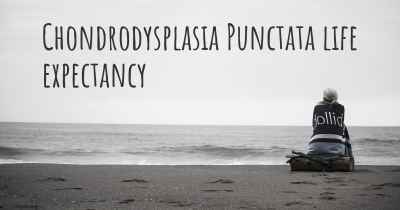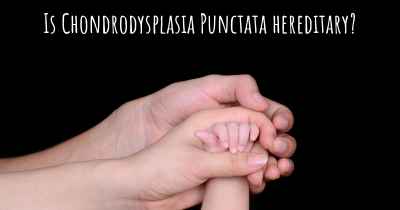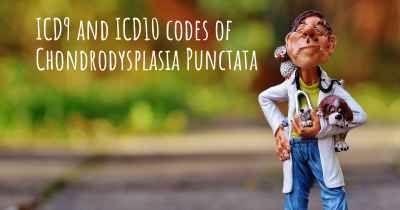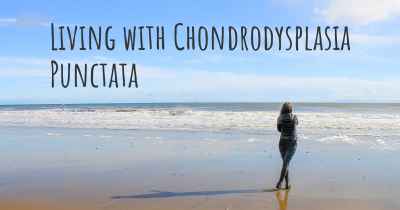What are the best treatments for Chondrodysplasia Punctata?
See the best treatments for Chondrodysplasia Punctata here
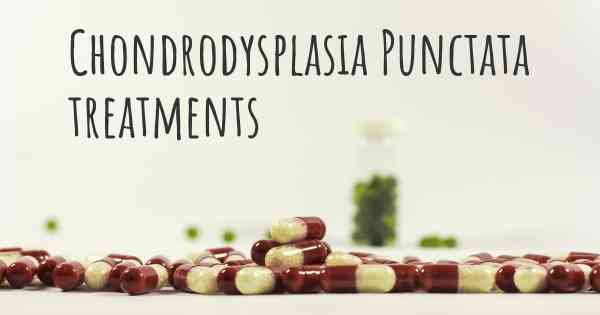
Treatments for Chondrodysplasia Punctata
Chondrodysplasia punctata is a rare genetic disorder characterized by skeletal abnormalities, developmental delays, and other associated symptoms. The treatment for chondrodysplasia punctata primarily focuses on managing the symptoms and providing supportive care to improve the quality of life for affected individuals. While there is no cure for this condition, various interventions can help alleviate specific symptoms and complications.
1. Multidisciplinary Approach
A multidisciplinary approach involving a team of healthcare professionals is crucial in managing chondrodysplasia punctata. This team may include geneticists, orthopedic specialists, neurologists, physical and occupational therapists, speech therapists, and other specialists as needed. This collaborative effort ensures comprehensive care and tailored treatment plans for each individual.
2. Symptomatic Management
Chondrodysplasia punctata presents with a wide range of symptoms, and treatment is aimed at managing these symptoms to improve the overall well-being of the patient. The specific interventions may vary depending on the severity and type of symptoms experienced by the individual.
Skeletal Abnormalities:
Orthopedic specialists play a crucial role in managing skeletal abnormalities associated with chondrodysplasia punctata. They may recommend interventions such as bracing, physical therapy, and surgical procedures to address joint contractures, scoliosis, or other skeletal deformities. These interventions aim to improve mobility, prevent further complications, and enhance the individual's independence.
Respiratory Support:
In severe cases where respiratory function is compromised, respiratory support may be necessary. This can include interventions such as oxygen therapy, respiratory devices, or even mechanical ventilation. Regular monitoring of respiratory function is essential to ensure early intervention and prevent respiratory complications.
Developmental Delays:
Children with chondrodysplasia punctata often experience developmental delays, including motor, cognitive, and speech delays. Early intervention programs, such as physical therapy, occupational therapy, and speech therapy, can help improve these delays and promote optimal development. These therapies focus on enhancing motor skills, cognitive abilities, and communication skills, respectively.
Vision and Hearing Impairment:
Some individuals with chondrodysplasia punctata may have vision or hearing impairments. Regular eye and ear examinations are essential to identify any issues early on. Treatment may involve corrective lenses, hearing aids, or other appropriate interventions to optimize vision and hearing abilities.
3. Genetic Counseling
Genetic counseling is an integral part of the management of chondrodysplasia punctata. Genetic counselors provide information about the condition, its inheritance pattern, and the likelihood of recurrence in future pregnancies. They also offer emotional support and guidance to affected individuals and their families, helping them make informed decisions regarding family planning and genetic testing.
4. Supportive Care
Supportive care plays a vital role in improving the quality of life for individuals with chondrodysplasia punctata. This includes providing assistance with daily activities, ensuring a safe environment, and addressing any additional medical or psychosocial needs. Support groups and counseling services can also be beneficial for affected individuals and their families, providing a platform to share experiences, seek advice, and find emotional support.
5. Ongoing Monitoring and Management
Regular follow-up appointments with the healthcare team are essential to monitor the progression of symptoms, address any new concerns, and adjust the treatment plan accordingly. This ongoing management ensures that the individual receives the most appropriate and up-to-date care.
It is important to note that the treatment options mentioned above are general recommendations and may vary depending on the specific needs of each individual with chondrodysplasia punctata. Consulting with healthcare professionals is crucial to develop a personalized treatment plan.
